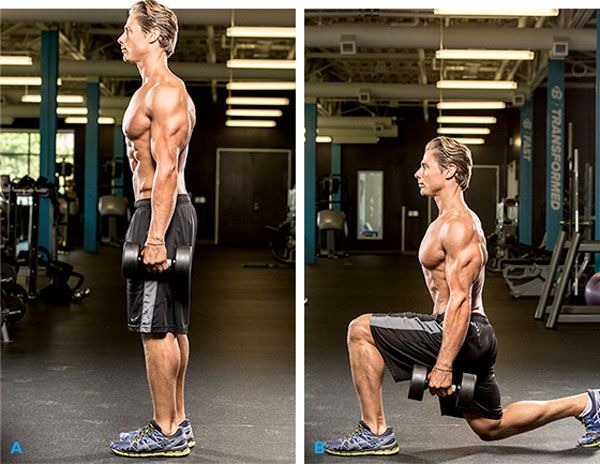How to Stationary Lunges
There are many options for doing the exercise: attacks with dumbbells or with a barbell on the shoulders, in Smith, lunges back and forth, in place, attacks aside (side attacks), Bulgarian attacks and even “curtsey”. Each variant has its own characteristics and technique of execution. All sorts of attacks I want to try to include in training and it seems that for sure there is that best kind of attacks that will make the buttocks perfectly round and elastic.
[wp_ad_camp_1]
What attacks for the buttocks do the best? Best of all – diversity. You do not need to change the training program every week. But periodically replace the exercises with similar ones. For example, one month, make a thrust forward with a barbell, and the second month – attacks back with dumbbells. The correct attacks for the buttocks are attacks with good technique of execution.
The main working muscles during Stationary Lunges:
- leg muscles (quadriceps, hamstrings, driving muscles)
- muscles of the buttocks (large gluteal, median gluteal)
[wp_ad_camp_2]
[wp_ad_camp_1]
Auxiliary muscles:
- Gastrocnemius
- Abdominal
- Back Rectifiers
Stationary Lunges with Dumbbells: How to do it right

- Take dumbbells in your hands;
- with one foot make a step forward;
- Go down so that the thigh is parallel to the floor, and the knee does not go beyond the sock;
- the second leg remains behind, bent at 90 degrees (with the knee not touching the floor);
- push the front leg off the floor and return to the starting position;
- do the same for the second leg.
[wp_ad_camp_4]
The Lunges can be done both standing in place (as in the video), and walking with a step. Doing lunges with a step you spend a little more energy (it’s important for those who lose weight), but also the shock load on your knees more (important for those who have knee pain).
Perform 4 sets of 10-12 repetitions per leg, rest between approaches should be 90 seconds.

















































